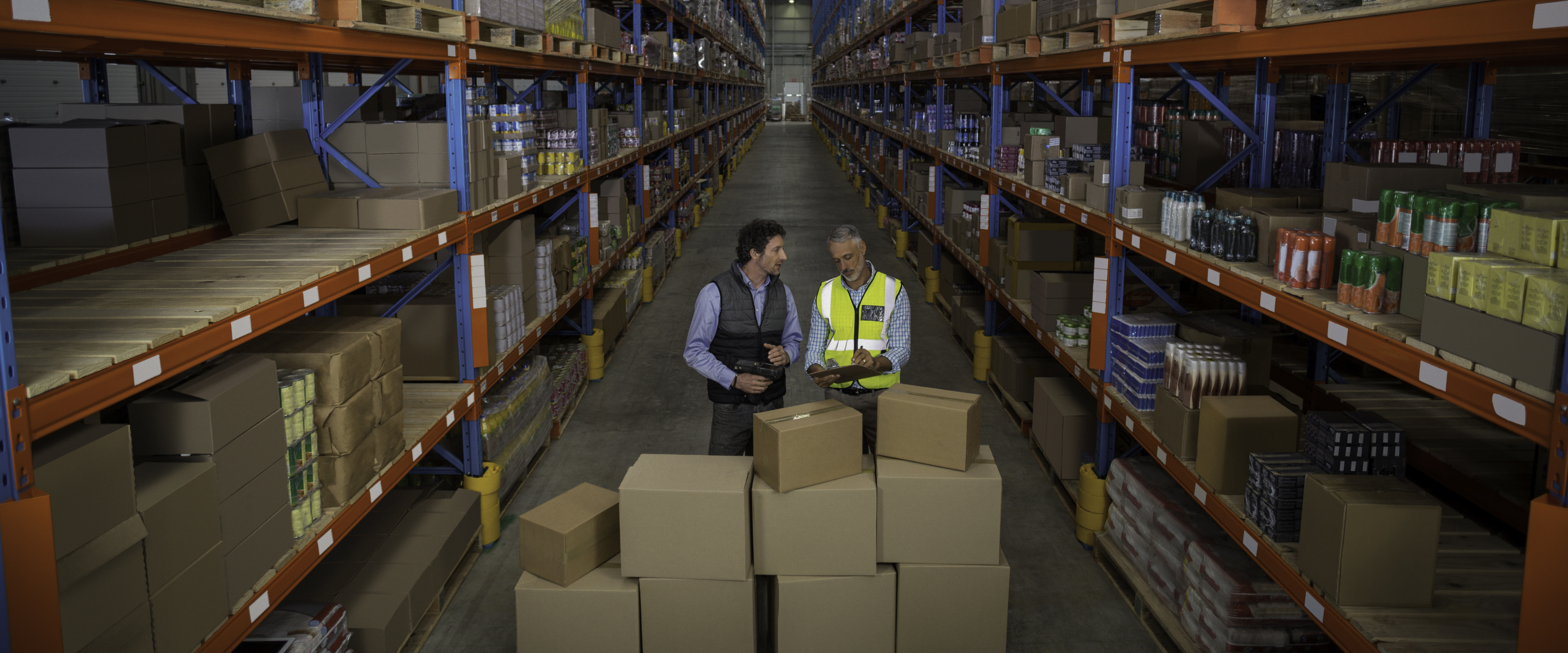Introduction
The Council of Supply Chain Management Professionals (CSCMP) is proud to work with BluJay Solutions and Adelante SCM on this report. The research is centered on whether customer experience is growing in its importance in differentiating brands. That in and of itself is intriguing.
For decades, we logisticians and supply chain professionals have driven our value from a cost to be managed to a revenue-generating part of modern business. We learned to start with the customer in mind when building our supply chain capabilities, and we’ve done our best to educate those we serve about that approach. We know that supply chains enable customer experiences, but is supply chain excellence as important as price and product? Will customer experience overtake price and product as the No. 1 brand differentiator? If so, then we need to explore the characteristics that today’s supply chains must demonstrate to accomplish this feat.
This research explores what key supply chain participants can and must do to build long-lasting, loyalty-building experiences. Yes, we will continue to manage costs, but we also need to create supply chain capabilities that support positive customer experience. This will undoubtedly change the industry’s best practices in terms of how and where we make future investments. Our research explores this idea across a wide spectrum of companies. How do smaller companies view this if they are to compete with larger, more heavily funded supply chains? Is it only the big that win? This research explores that idea as well.
We also ask questions around connectivity, which drives visibility and decisions around investments in technology. The research explores various companies’ perspectives, as well as how a company’s customers might see those investments. Clearly, the technology that is available to us is far superior to anything we’ve had in the past. But we also know that installing new systems without changing business processes simply results in more expensive technology. If we are to deliver a superior customer experience, then we have to really understand what we are installing and how to get the most out of that new functionality. Our research unveils recommendations as well as the role of senior management, whose support and commitment must be unwavering.
Those of us who have been in the supply chain world can understand this description: “Seamless, fluid, fully integrated, satisfying the needs of our customers at the lowest total delivered cost.” Next time you’re at a cocktail party and someone asks you what you do, give them that for an answer! Then, ask about the last thing they purchased and how they found the process. I’d venture to say the answers were possible only because of a strong supply chain foundation. We matter, we make it happen.
— Rick Blasgen
Council of Supply Chain Management Professionals (CSCMP) President and CEO
Council of Supply Chain Management Professionals (CSCMP) President and CEO
Survey Results
Will customer experience overtake price and product as the No. 1 brand
differentiator? Which supply chain capabilities will be most important in delivering an enhanced
customer experience (CX)? What factors are driving — and which ones are inhibiting — supply chain
innovation efforts? How are companies exchanging data with trading partners, and what is the quality of
that data?
To find answers to these and other pressing supply chain questions, Adelante SCM
and BluJay Solutions, in partnership with the Council of Supply Chain Management Professionals (CSCMP),
conducted an online survey of supply chain and logistics professionals in March 2019. We received 438
valid responses from around the world, a significant increase from last year’s survey, which had 137
respondents.
We asked manufacturers, retailers, logistics service providers (LSPs), and other
companies in the Americas, EMEA, and APAC to rate their company’s supply chain performance relative to
industry peers (ranging from Significantly Below Average to Significantly Above Average). Respondents
also characterized their company’s culture with regard to technology adoption (ranging from Laggards to
Innovators). This enabled us to compare the responses between Above Average and Innovator companies with
those from Below Average and Laggard companies.
The following sections summarize some of the key findings from the survey results.
Customer Experience Is Becoming the No. 1 Brand Differentiator
“Over the next five years, customer experience will overtake price and
product as the No. 1 brand differentiator.” Do you agree or disagree with this statement?
This question is inspired by an article by Julio Hernandez, Global Customer Centre
of Excellence Lead and U.S. Customer Advisory Practice Lead at KPMG, where he writes:
“Organizations are investing record
amounts in enhancing the customer experience. Analysts predict that over the next five years, customer
experience will overtake price and product as the number one brand differentiator. Almost 9/10
organizations expect to be competing primarily on the basis of customer experience.”
Source: “How much is customer experience worth?” Julio Hernandez, KPMG, September 2016
Source: “How much is customer experience worth?” Julio Hernandez, KPMG, September 2016
Overall, 61% of the survey respondents Agree or Strongly Agree with
this assessment. Only 22% Disagree or Strongly Disagree, with the rest taking a neutral
perspective.
Do you agree or disagree with the following statement:
Over the next five years, customer experience will overtake price and product as the No. 1 brand differentiator.
Agree received the highest percentage of votes across all respondent
categories — including for both Innovator/Early Adopter companies and Laggards/Late Majority companies,
as well as Above Average Performance companies and Average or Below Performance companies.
There was a notable difference, however, between large and small companies, as well
as between North American companies and those in other global regions.
More large companies (31%) Disagree or Strongly Disagree that
customer experience will become the No. 1 brand differentiator over the next five years compared with
smaller companies (18%). A similar gap exists between North American companies (27% Disagree or
Strongly Disagree) compared with companies in other global regions (11%).
Do you agree or disagree with the following statement:
Over the next five years, customer experience will overtake price and product as the No. 1 brand differentiator.
Further research is required to explain these differences, but maybe in the case of
smaller companies, they view customer experience as a more effective way to compete against their larger
peers than trying to compete on price.
Customer Experience Pulls Ahead as Main Driver for Supply Chain
Innovation
What are the top three factors driving supply chain innovation at your
company today?
In last year’s survey, To reduce costs and To deliver an enhanced
customer experience received the same percentage of top-rank votes (31%) for innovation drivers.
This year To deliver an enhanced customer experience pulled ahead, receiving 30% of top-factor
votes, compared with 29% for To reduce costs and 20% for To create a competitive
advantage.
Compared with 2018, To reduce costs dropped 9%, while To create a
competitive advantage increased by almost 14%.
2018 vs. 2019
Factors Driving Supply Chain Innovation
Consistent with last year’s results, To deliver an enhanced customer
experience received the most top-rank votes from both Innovator/Early Adopter and Above Average
Performance companies (29% and 32%, respectively). In contrast, To reduce costs received the most
top-rank votes from both Laggards/Late Majority and Average or Below Performance companies.
Technology Adoption and Supply Chain Performance
Factors Driving Supply Chain Innovation
When it comes to shippers (manufacturers, retailers, and distributors), reducing
costs remains the top driver of innovation. It received 33% of top-factor votes from shippers, with To
deliver an enhanced customer experience ranking second (26%) and To create a competitive
advantage coming in third (19%).
For LSPs, however, delivering an enhanced customer experience remains king.
It received 38% of top-factor votes from LSPs — a noticeable 21% increase from last year’s survey.
Shippers vs. LSPs
Factors Driving Supply Chain Innovation
For shippers, there’s a disconnect here. While 63% of them Agree or Strongly
Agree that CX will become the No. 1 brand differentiator over the next five years, cost reduction
continues to drive their supply chain innovation efforts. In fact, To deliver an enhanced customer
experience dropped 19% from last year’s survey (offset, however, by a 31% increase in To
create a competitive advantage).
Perhaps last year’s challenging transportation market, which led to double-digit
increases in transportation costs for many shippers, has made cost reduction an even bigger priority
this year. Whatever the reason, if a majority of shippers truly believe that companies will compete
mostly on the basis of CX in the near future, they need to start aligning their supply chain innovation
efforts accordingly.
Top Supply Chain Investments Today: Real-Time Visibility and
BI/Analytics
Where are you focusing your supply chain investments today?
Overall, BI/Analytics received the most top-factor votes (22%) for supply
chain investments, followed by Visibility/Control Tower (21%) andTransportation (16%).
Where are you focusing your supply chain investments today?
Choose three in ranked order.
Historically, improving supply chain visibility has been a top priority for
industry executives. Every company wants the ability to see what’s happening across its supply chain,
analyze what it sees (which is where business intelligence and analytics come in), and then take
informed actions to prevent disruptions and drive continuous improvement. But with supply chains
continuing to get more fragmented and global, end-to-end visibility remains a challenging goal to
achieve.
In the transportation realm, however, recent advancements in technology are helping
companies see their transportation operations with more clarity. A number of real-time freight
visibility solution providers are leveraging GPS, application programming interfaces (APIs), mobile
devices, cloud computing, and other technologies to track orders, shipments, and trucks in transit. With
this real-time data and visibility, companies can quickly and accurately answer the most common
questions they receive from customers: Where’s my order? Where’s my shipment? When will it
arrive?
Companies can also use this data, coupled with algorithms and machine learning, to
provide customers with more accurate and reliable predicted estimated times of arrival (ETAs) and to
proactively notify them of any changes or delays.
As a result, real-time freight visibility (often integrated with broader Control
Tower capabilities) is one of the hottest investment areas for shippers and LSPs today.
Real-time visibility is also the most important supply chain capability for
delivering an enhanced customer experience, according to our survey respondents. Real-time visibility
to orders, shipments, and inventory received the most top-factor votes overall (28%), followed
by Time-definite deliveries (20%) and Proactive notifications regarding orders and
shipments (19%).
Which supply chain capabilities will be the most important in delivering an enhanced customer experience?
Choose three in ranked order.
Interestingly, BI/Analytics/Machine Learning ranked relatively low in this
question. Our hypothesis is that, compared with the other response options, BI/Analytics/Machine
Learning is not something that customers experience directly. It’s a behind-the-scenes
capability.
Therefore, from an internal perspective, BI/Analytics/Machine Learning
(coupled with visibility) plays an important role in enabling CX, which is why companies are investing
in it. But from a customer perspective, the value is less evident compared with visibility into shipment
status or the ability to quickly and easily return purchases.
Siloed Systems/Processes Remain Big Barriers to Innovation
What are the top three barriers to supply chain and logistics innovation at
your company today?
Siloed systems and/or processes received both the highest percentage of
top-factor votes (21%) and the most total votes as a barrier to innovation — that is, the most votes for
first, second, or third place combined.
Existing IT systems are outdated (18%) and Lack of upper management
support for funding/resources (14%) rounded out the top three.
The top two barriers were the same in 2018 but in reverse. Siloed systems and/or
processes increased by 17% this year compared with 2018, while Existing IT systems are
outdated decreased by 13%. This suggests that companies are making some progress in modernizing
their IT systems, but breaking down the silos between their systems and processes is a growing
challenge.
What are the top three barriers to supply chain and logistics innovation at your company today?
We did not include Lack of upper management support for funding/resources as
a response option in the 2018 survey, so we cannot make year-over-year comparisons. However, the fact
that it received the third-most top-factor votes overall is notable. Also, for Laggard/Late Majority
companies, it is the biggest barrier to innovation, receiving 23% of top-factor votes (compared to 10%
for Innovator/Early Adopter companies).
Similarly, Lack of upper management support for funding/resources received
the second-most top-factor votes from Average or Below Performance companies (20%), ranking higher than
Existing IT systems are outdated (17%). In comparison, Lack of upper management support for
funding/resources ranked fifth for Above Average Performance companies, with 10% of top-factor
votes.
Lack of upper management support for funding/resources
These results suggest that Innovators/Early Adopters and Above Average Performance
companies are better at developing and communicating the business case for supply chain innovation
investments than their counterparts. It could also mean that upper management teams at Innovators/Early
Adopters and Above Average Performance companies are doing a better job of creating innovation-driven
cultures.
Upper-End Companies Lead on Trading Partner Connectivity
Approximately what percent of your trading partners (suppliers, customers, logistics service providers, etc.) are you electronically connected to?
A key finding from the 2018 survey was that Innovators/Early Adopters and Above
Average Performance companies were ahead of others in prioritizing Trading Partner Connectivity (TPC)
for supply chain innovation.
In this year’s survey, we wanted to understand the current state of TPC. As the
chart shows, more Innovators/Early Adopters reported having 100% electronic connectivity with trading
partners (11%) than Laggards/Late Majority (7%). The delta widens when comparing the broader range of 80
to 100% electronic connectivity (46% vs. 28%).
Approximately what percent of your trading partners (suppliers, customers, logistics service providers, etc.) are you electronically connected to?
Similarly, more Above Average Performance companies reported having 100% electronic
connectivity with trading partners (11%) than Average or Below Performance companies (6%). The
difference is even greater when comparing the broader range of 80 to 100% electronic connectivity (45% vs.
30%).
Electronic Connectivity Defined
We defined “electronic connectivity” as the ability to send and receive data from trading partners in an electronic format that doesn’t require manual entry into software applications. For example, if you send and receive data from trading partners via electronic data interchange (EDI) or APIs, that is considered electronic connectivity. However, if you send or receive data from trading partners via fax or email and then have to manually enter that information into a software application, then that is not electronic connectivity.
We defined “electronic connectivity” as the ability to send and receive data from trading partners in an electronic format that doesn’t require manual entry into software applications. For example, if you send and receive data from trading partners via electronic data interchange (EDI) or APIs, that is considered electronic connectivity. However, if you send or receive data from trading partners via fax or email and then have to manually enter that information into a software application, then that is not electronic connectivity.
Looking at the other end of the spectrum, more Laggards/Late Majority companies
reported having less than 20% electronic connectivity with trading partners (18%) than Innovators/Early
Adopters (6%). Similarly, more Average or Below Performance companies reported having less than 20%
electronic connectivity with trading partners (14%) than Above Average Performance companies (8%).
Which type of trading partners are companies least connected to
electronically? Suppliers received the most votes overall (25%), but all other categories
received a significant number of votes, too. In short, there is a lack of electronic connectivity across
the entire spectrum of trading partners.
Which type of trading partner are you LEAST electronically connected to?
Overall, the survey results show that companies that are more electronically
connected to their trading partners are more likely to have better supply chain performance and be
innovators/early adopters of technology than companies that still rely on emails, faxes, and other forms
of non-electronic connectivity.
EDI and Email: The Most Common Ways to Exchange Data
What is the approximate breakdown of how you are currently connected
(exchanging data and information) with your trading partners?
EDI and Email are the two most common ways data and information are
exchanged with trading partners, each getting almost double the share of the other methods. Together,
EDI and Email account for almost 70% of the data/information exchanged with trading
partners.
What is the approximate breakdown of how you are connected (exchanging data and information) with your trading partners?
EDI was the top method for Innovators/Early Adopters (36%), Above Average
Performance companies (36%), North American companies (41%), and companies with over $1 billion in
revenue (45%), while Email was the top method for Laggards/Late Majority (40%), Average or Below
Performance companies (39%), companies outside North America (29%), and companies with less than $1
billion in revenue (34%).
What is the approximate breakdown of how you are currently connected (exchanging data and information) with your trading partners?
Technology Adoption
Supply Chain Performance
Company Size (Revenue)
Location
Not surprisingly, Innovators/Early Adopters are using APIs the most (21%)
compared to Laggards/Late Majority (13%) and Average or Below Performance companies (15%).
With Phone (15%), Fax (6%), and Email (33%) accounting for 54%
of data/information exchange, it is no surprise that data quality remains a big issue in the industry,
as highlighted below.
Data Quality: Lots of Room for Improvement
How would you rate the quality of the data you receive from your trading
partners (its accuracy, timeliness, and completeness)?
Overall, only 40% of the respondents rated the data quality they receive from
trading partners as Good or Very Good, while 14% rated the quality as Poor or Very
Poor.
How would you rate the quality of the data you receive from your trading partners (its accuracy, timeliness, and completeness)?
More Innovators/Early Adopters reported having Good/Very Good data quality
(46%) than Laggards/Late Majority (32%). Similarly, more Above Average Performance companies reported
having Good/Very Good data quality (55%) than Average or Below Performance companies (21%).
How would you rate the quality of the data you receive from your trading partners (its accuracy, timeliness, and completeness)?
Looking at the other end of the spectrum, more Laggards/Late Majority companies
reported having Poor/Very Poor data quality (23%) than Innovators/Early Adopters (12%).
Similarly, more Average or Below Performance companies reported having Poor/Very Poor data
quality (19%) than Above Average Performance companies (11%).
In short, although Innovators/Early Adopters and Above Average Performance
companies are doing much better than their counterparts when it comes to data quality, they still have
a lot more work to do on this front.
Summary
A majority of companies Agree or Strongly Agree that customer
experience will overtake price and product as the No. 1 brand differentiator over the next five
years.To deliver an enhanced customer experience is also the top factor driving supply chain
innovation at many companies today, particularly Innovator/Early Adopter and Above Average
Performance companies.
Real-time visibility is the most important supply chain capability in delivering
an enhanced CX, which is why it is a top investment focus for companies, along with business
intelligence and analytics.
Siloed systems and/or processes is the top barrier to supply chain
innovation, followed by Existing IT systems are outdated. Compared to last year’s survey
results, it appears that companies are making some progress in modernizing their IT systems, but
breaking down the silos between their systems and processes is a growing challenge.
When it comes to trading partner connectivity, Innovator/Early Adopters and
Above Average Performance companies are leading the way in terms of establishing electronic
connections with trading partners and data quality — but there is still a lot of room for growth and
improvement.
Recommendations
Would you like to talk more about the connection between technology adoption and supply chain performance?
About
The Council of Supply Chain Management Professionals (CSCMP) is the leading global association for supply chain management professionals. We have been helping our members, their careers, and their companies since 1963. Nine thousand members worldwide receive unparalleled networking opportunities, cutting-edge research, and online and on-site professional educational opportunities.
Adelante means “forward” or “move ahead” in Spanish. We chose this as our name because we are moving supply chain and logistics leadership forward by making it easier for industry professionals to share ideas, knowledge, and advice with each other. Adelante SCM is a peer-to-peer learning and networking community for supply chain and logistics executives and young professionals.
Founder and president, Adrian Gonzalez is a trusted advisor and leading industry analyst with more than 18 years of research experience in transportation management, logistics outsourcing, global trade management, social media, and other supply chain and logistics topics.
He is a member of the Council of Supply Chain Management Professionals and is a LinkedIn Influencer with thousands of followers. Adrian has a B.S. degree in Materials Science and Engineering from Cornell University. He also earned a Graduate Certificate in Supply Chain Management from Northeastern University, where he also served as an adjunct instructor in their Executive MBA program.
BluJay Solutions delivers supply chain software and services to the world’s most progressive retailers, distributors, freight forwarders, manufacturers, and logistics service providers. Transforming supply chain logistics with the BluJay Global Trade Network, we enable customers to unlock the power of more than 40,000 universally connected partners. With BluJay, companies can achieve greater trade velocity, transform their supply chain economics for disruptive advantage, and see beyond the horizon to optimize their future in the global economy. To learn more, visit: www.blujaysolutions.com.
5.3%













